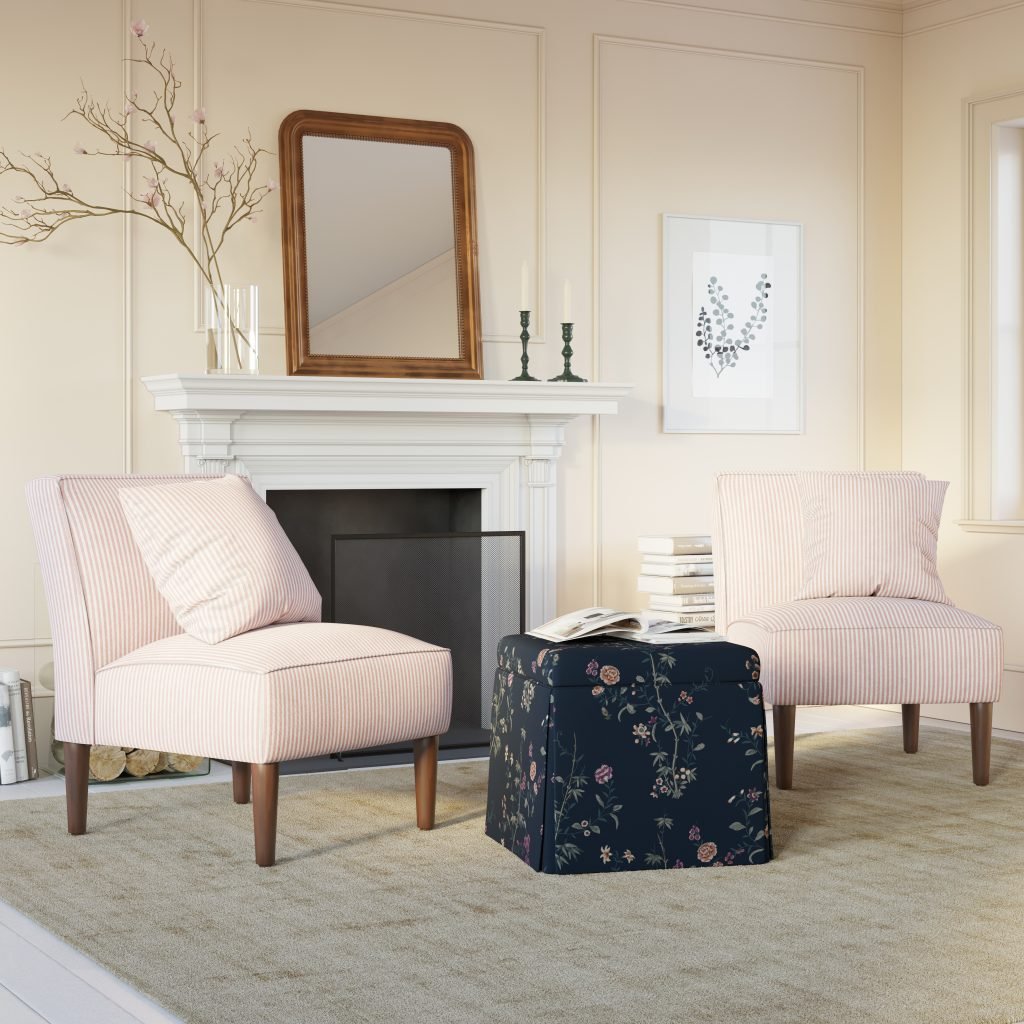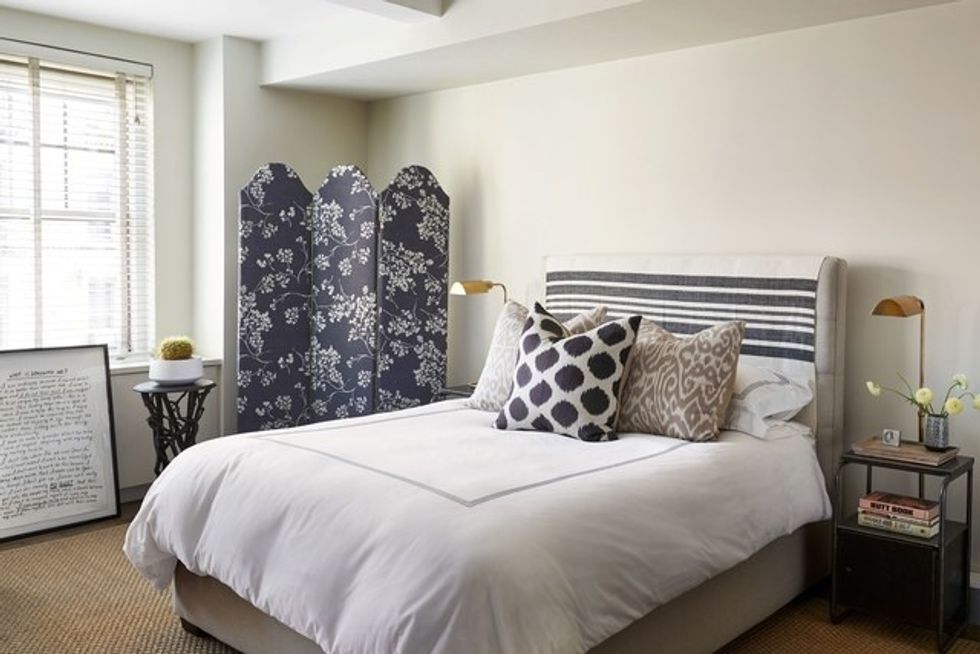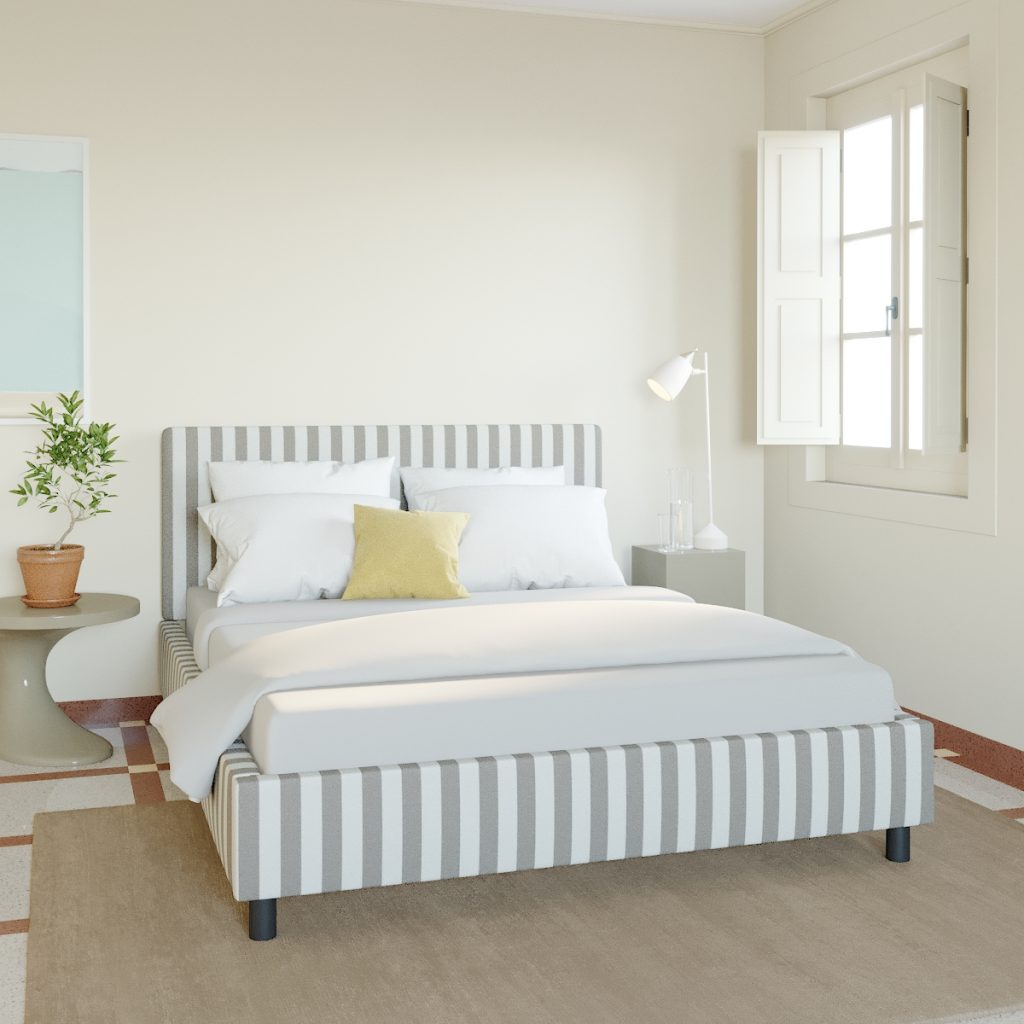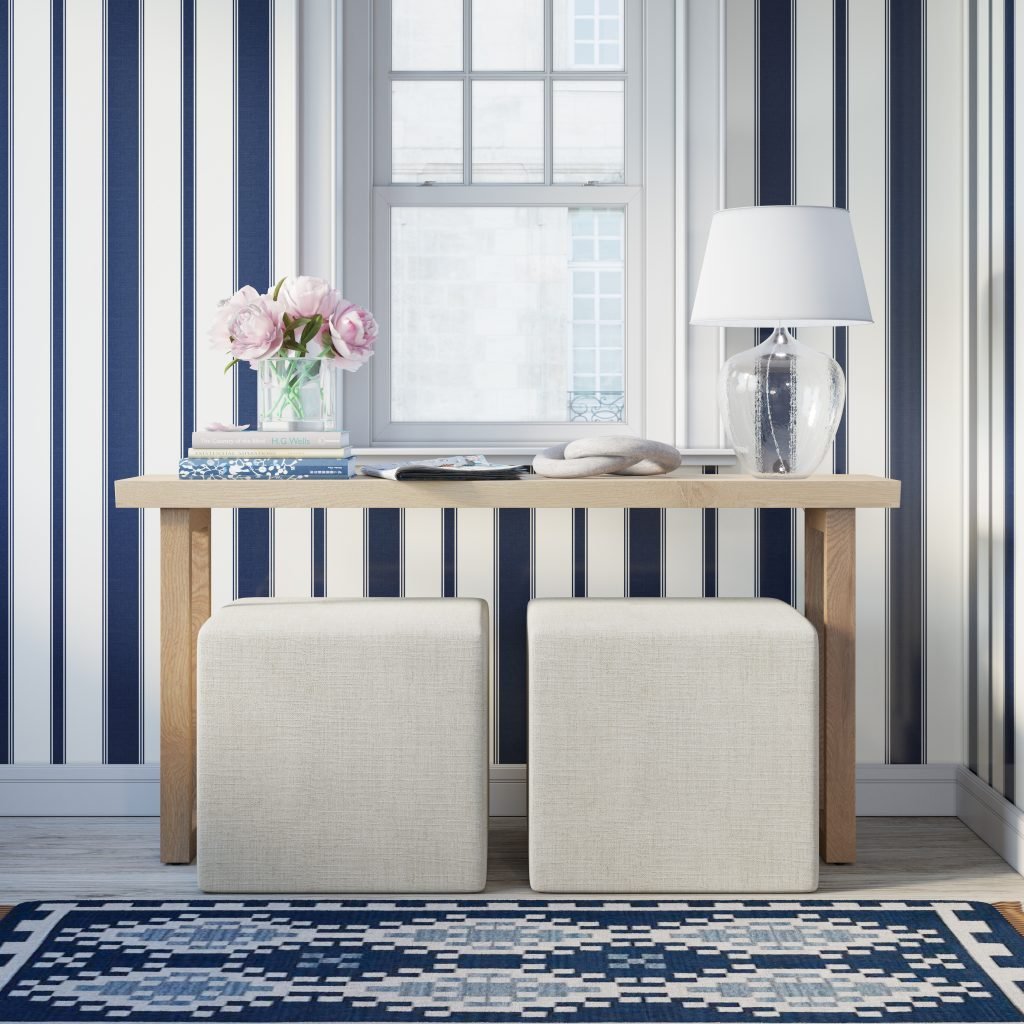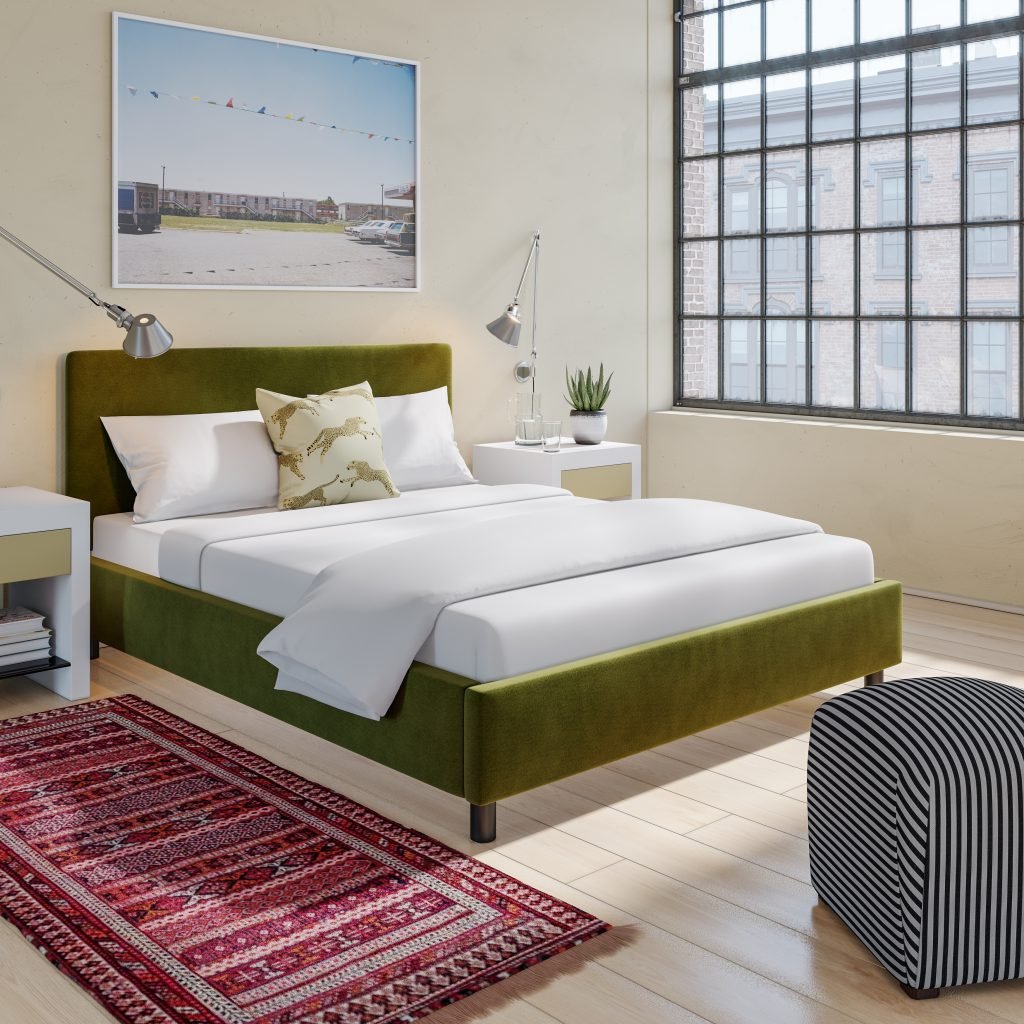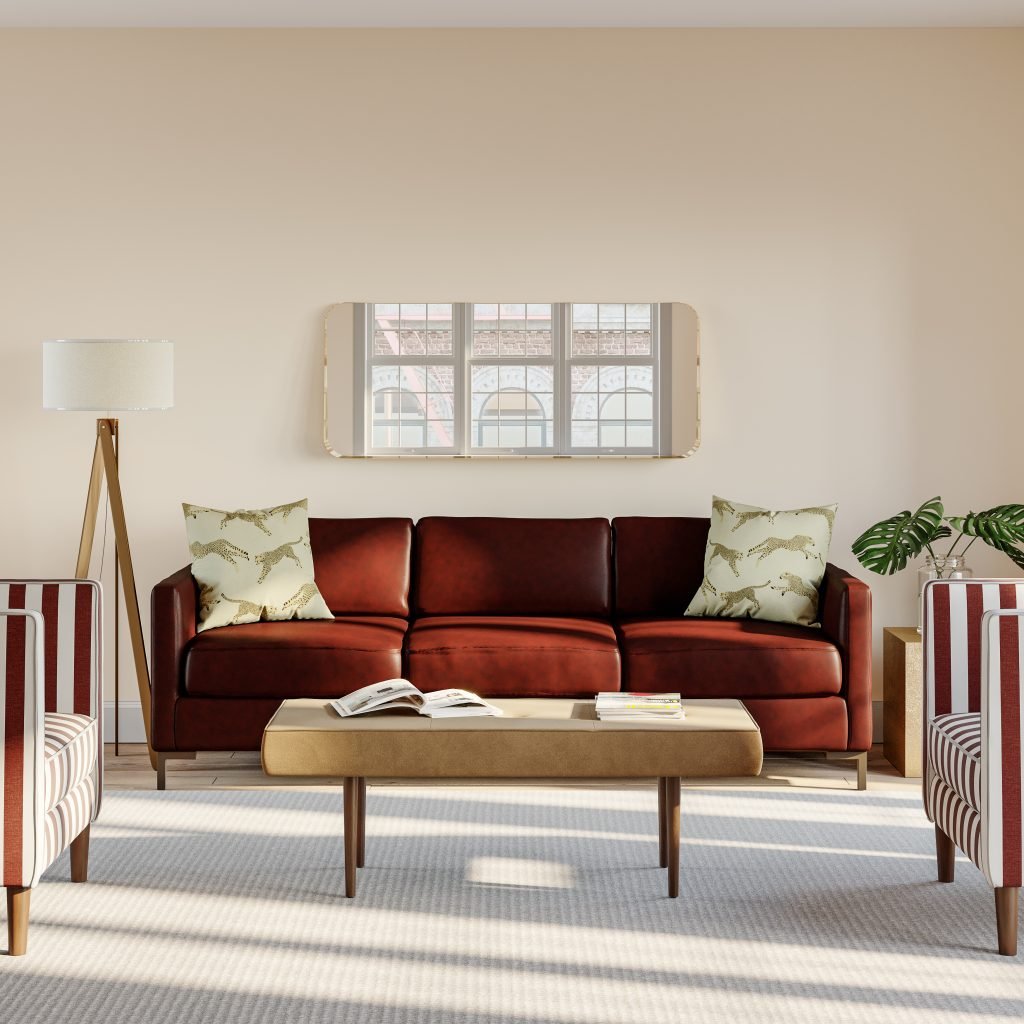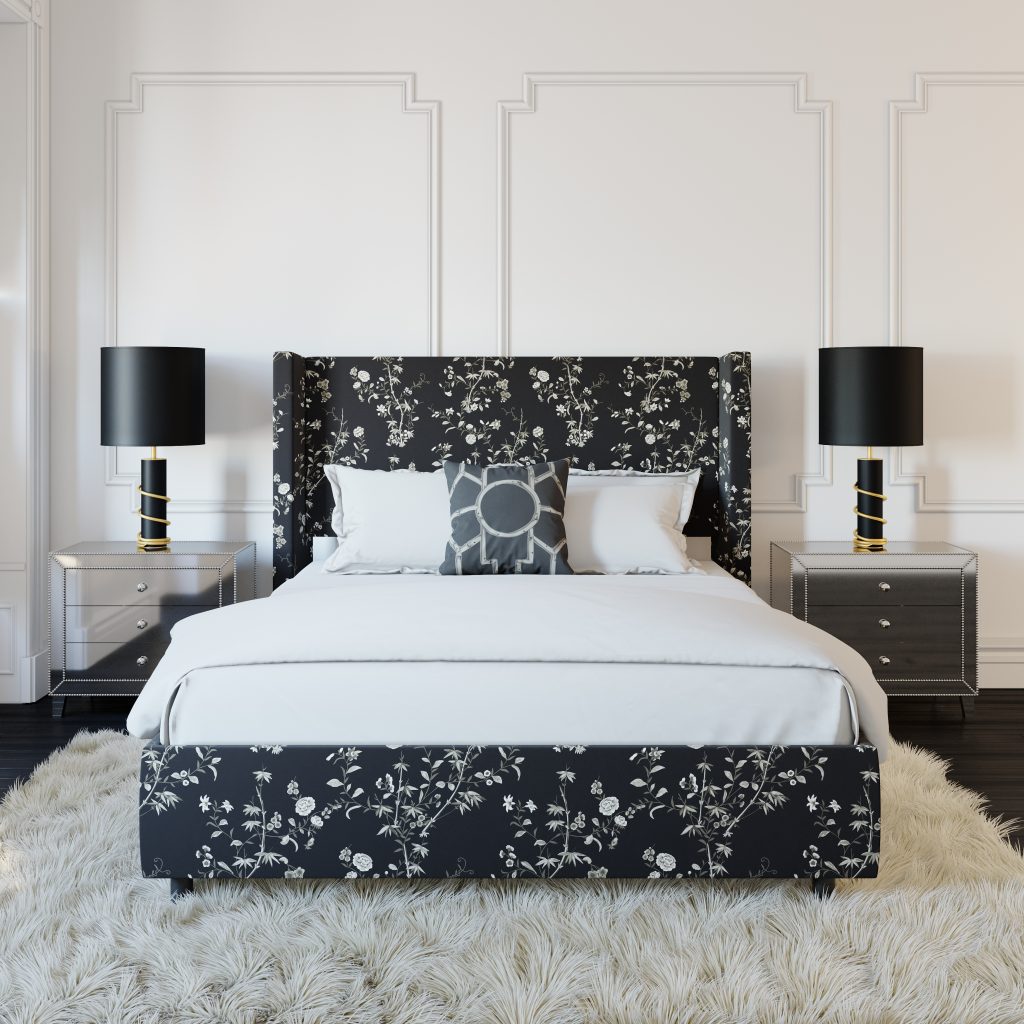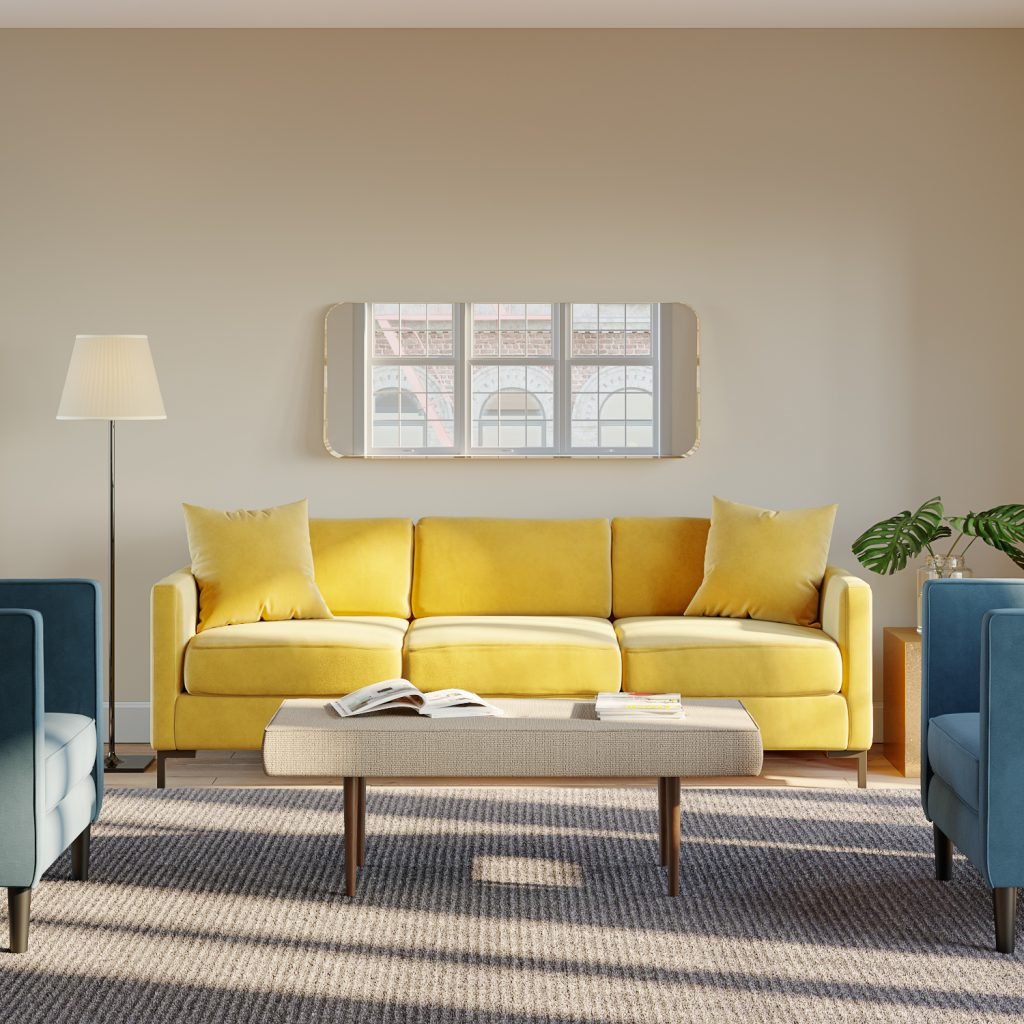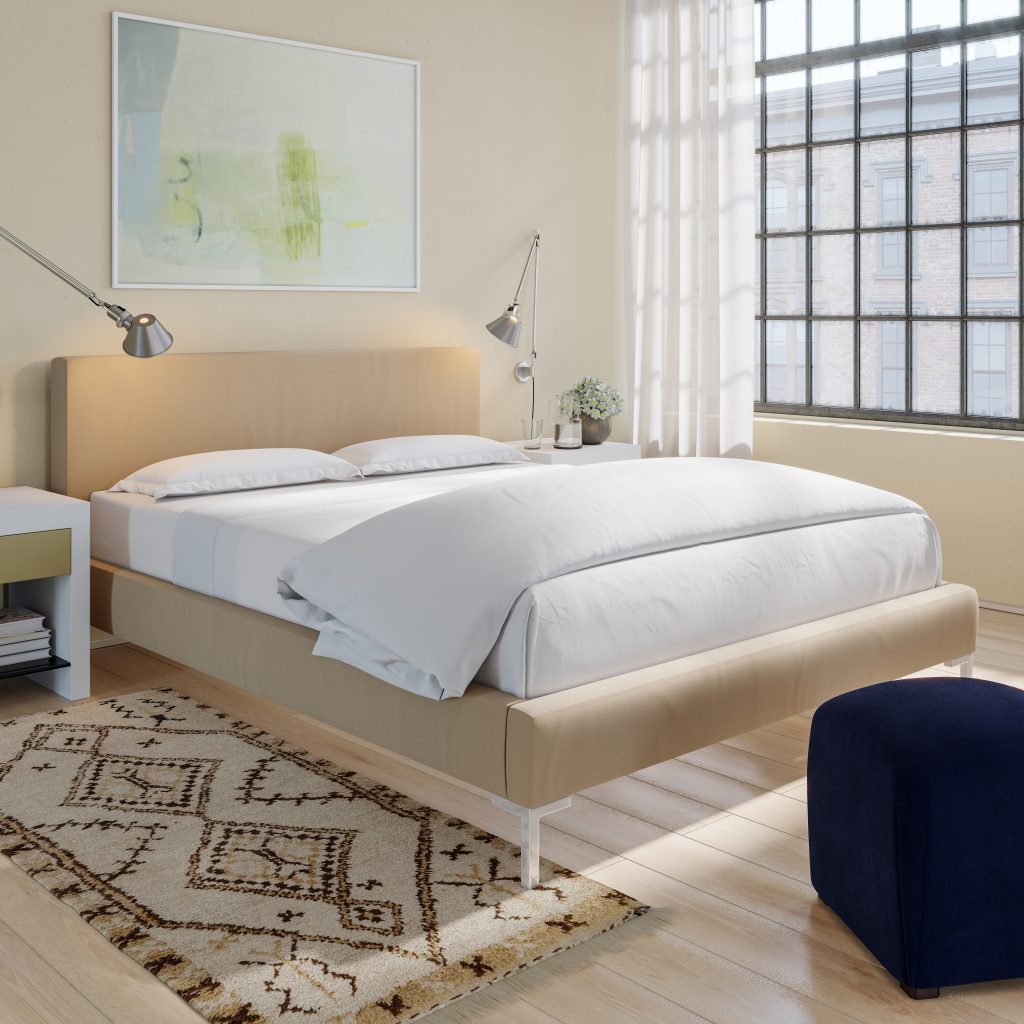If you’ve ever thought that beige is boring, think again. Often referred to as the go-to neutral wall, especially for wall color, there are actually many different shades of beige that convey totally different moods and styles. And the best part? Beige paint colors are as versatile as they are varied. In other words, you can’t go wrong with beige walls in your living space. But now you may be wondering: what about the rest of the furniture?
Whether you’re looking to spice up your space with a pop of bold color, or you love an all-neutral oasis, this guide will help you pick a color palette that brings life to your space. But first: you need to figure out what type of beige color scheme we’re starting with.
Warm beige or cool beige?
Figuring out whether your beige walls fall into a family with cool or warm colors is an important place to start, as this will help you figure out what color combo works best on the rest of your furniture. The easiest way to do this is to look at the undertones. A warm beige has a more yellow undertone, while a cool beige has a pinkish or greyish undertone. If you’re stuck, hold paint chips up to your wall color and find the one that best matches what you’re seeing, and look that color up online or with your color consultant where you buy paint, as they can help you confirm the tone.Does grey furniture go with beige walls?
If you find that you’re working with a cooler beige paint (sometimes called “greige” or “taupe” – popular neutral colors in home decor) then grey furniture works really nicely in a variety of room designs. This is because a traditional warm beige color has a strong yellow undertone, which can prove tricky for mixing with cool colors like grey, whether light or dark grey. On the other hand, cool beiges make it super easy to create a color scheme that works seamlessly together with grey furniture. Shop the look: Tailored Platform Bed in Charcoal Cabana StripeHow to add color to my beige living room?
Maybe you’ve moved into a new space that has beige paint, or the walls in your current space feature the neutral color and you’re committed to the choice. Either way, it’s extremely easy to add color to your living room with a beige on the walls. Before we get into what colors to choose, first consider all the ways you could infuse color into your space. Most people immediately think about the major pieces of furniture (we recommend opting for easy/affordable custom furniture to give you more design choice), but there’s so much more opportunity! From the natural elements like plants and flowers, to the wall art and area rug, don’t underestimate just how many design elements, large and small, can bring color into a space with beige walls.And now that we’re talking color, here are our favorite beige color combos and room ideas, according to interior design experts:
- Beige and navy blue: Navy and beige are both classics, and even better as a pair. If you’re looking for a splash of color without feeling overwhelmed by something bright or bold, this is a perfect option. An entryway accent wall with navy stripes and a light beige background adds visual intrigue and color while still remaining traditional and even reading as a neutral. And if you love blue but craving something other than navy? A teal works just as well as an accent color for a little more punch, or we love a pastel blue and beige bedroom to convey calm and comfort.
- Beige and mossy green: If you’re looking for an earthy, organic spin on your beige walls, opt for a mossy green fabric on your furniture. Perfect in a mid-century modern-inspired space, these colors will truly bring the outside in. Play with different nature-inspired textures to add even more depth, such as a soft velvet, and layer in accents such as non-flowering plants. Toss in a few fun beige throw pillows (we love these leaping cheetahs) that serve as conversation starters while still tying the whole space together.
- Beige and dark red or dark brown: There’s nothing quite as cozy as a warm beige paired with a deep red or brown, especially in a living room or dining room. This could manifest as a leather sofa or a classic burnt red cabana stripe. Either way, this scheme’s enveloping vibe is evocative of an old library and is nothing but welcoming. By substituting your coffee table for a mid-century bench in a beige color that speaks to the walls, the deep reds and browns can really stand out.
- Beige and black: For a modern spin on two classic colors, opting for black furniture with your beige walls is a no-fail solution no matter what room you’re working with. From the modern kitchen (beige walls, white cabinetry and black countertops & hardware) to the glam bedroom (black upholstered bed with black table lamps and gold metal accents), beige and black are timeless and flexible together.
- Beige and pastel pink: Pastel pink isn’t just for kids’ rooms. Pastels are often utilized to bring a joyful, uplifting spirit to a room, particularly when paired with beige walls for a color-pop effect. Opt for a pastel that is less saturated, whether through a soft ticking stripe or a floral design, to avoid feeling too juvenile. Complementing the palette with natural wood accents create an English garden-meets-grandmillennial vibe that people just can’t seem to get enough of.
- Beige and canary yellow: If you want your furniture to be the focal point, go bold and bright with a canary yellow against warm beige walls. The ultimate centerpiece, a yellow sofa will be the perfect one-of-a-kind conversation starter while infusing joy and light into any space – especially ones that don’t get a ton of natural light. Complement the scheme with light blue accents to soften and balance your color story.
- Beige and … beige! If color isn’t your thing, that’s okay too! Don’t be afraid to go monochrome. For example, an upholstered beige sofa or bed can work beautifully with beige walls and crisp white accents, as long as you add depth in other ways – such as through varied materials (in your lighting, area rugs, and throw pillows). When picking your specific beige fabrics, stick with all warm or cool colors, but choose various different tones so the room feels layered.

